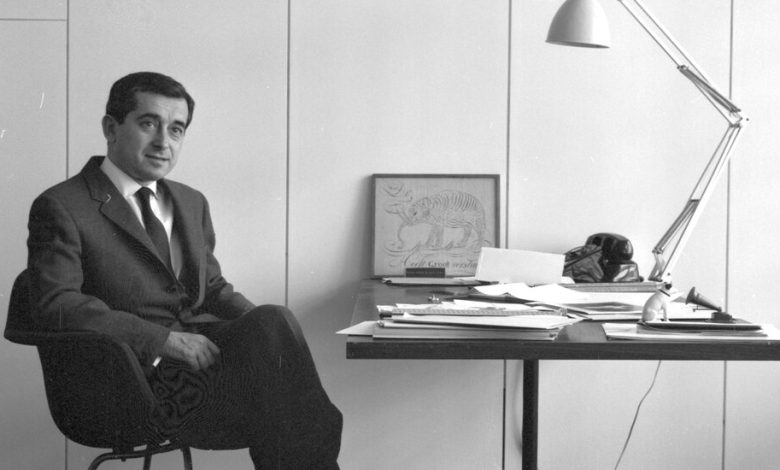George Tscherny, Whose Graphic Designs Defined an Era, Is Dead at 99

George Tscherny, a leading figure in postwar graphic design whose work unified the crisp, clean lines of European modern art with an American commercial pop sensibility, died on Monday at his home in Manhattan. He was 99.
His daughter Carla Tscherny confirmed the death.
Mr. Tscherny (pronounced CHAIR-nee) started his career in the early 1950s, near the beginning of an extended golden era of American consumerism and corporate growth — a period that demanded new types of advertising.
Many of the designers who crafted the signature images of the era were European immigrants, often refugees like Mr. Tscherny, who brought a familiarity with the latest in modern art and design. Their work graced advertising campaigns, produced on Madison Avenue, that pushed cigarettes and toothpaste and jet travel into American homes.
After apprenticing in Manhattan design studios for five years, Mr. Tscherny opened his own practice in 1955. He soon had a client list that read like a Who’s Who of postwar corporate America. American Can, Colgate Palmolive, Pan Am and RCA all hired his office to design advertising, logos and annual reports.
His work differed from that of the many graphic designers who gravitated to the so-called Swiss style, an austere, stripped-down aesthetic heavy on grids, clean lines and abstraction. He brought in humor and humanity: For an ad for Overseas National Airways promoting winter travel, he arranged silhouettes of airliners to resemble a snowflake.
“He did not follow a set condition of rules,” Steven Heller, a former art director for The New York Times who now teaches at the School of Visual Arts in New York, said in a phone interview. “There was always a jolly wit to his work.”
Mr. Tscherny once described his design approach as “maximum meaning with minimum means”; he also called it “the human element implied.” One famous poster, for the furniture designer Herman Miller, featured a cowboy hat sitting on one of the company’s signature chairs and the text “Herman Miller Comes to Dallas.”
“I see myself as a bridge between commerce and art,” Mr. Tscherny said in an interview for the Art Directors Club in 1997, when the club inducted him into its Hall of Fame. “For just as copy can be literature, design can be art when it reaches certain levels of originality and distinction.”
George Tscherny was born on July 12, 1924, in Budapest. His father, Mendel, was a Russian soldier during World War I who was captured by Austro-Hungarian forces and imprisoned in Hungary; when the war ended, he stayed.
George’s mother, Bella Tscherny, a Hungarian Jew, worked as a seamstress.
The family had very little money, and when George was 2 they moved to Berlin to escape antisemitism and to be close to some of his mother’s relatives, who helped support them.
He recognized from an early age the way that high art and commercial art overlapped, blended together and even nestled inside each other. There was perhaps no better place for that education than Weimar-era Berlin.
“Growing up in a poor, working-class household, I had to find art and culture outside the home,” he said in




